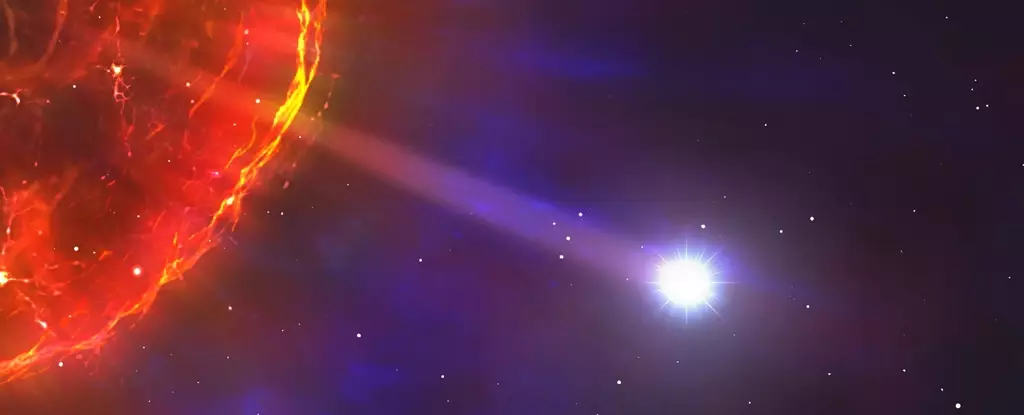Researchers from the Harvard-Smithsonian Center for Astrophysics have discovered six additional runaway stars in the Milky Way, including two record-breaking hypervelocity stars, which travel faster than any other runaway star detected in the galaxy. Four of these newly found objects are hypervelocity stars that travel at speeds exceeding the escape velocity of the Milky Way. According to the researchers, these four stars are likely the result of spectacular Type Ia supernovae, the “standard candles” used to measure the universe. The discovery has allowed for a new calculation of the rate at which these stars are born, and the results are consistent with the estimated rate of Type Ia supernovae.
The Double-Degenerate Double-Detonation
Whenever a star explodes, the force of the detonation can eject whatever is left into space at high speeds. Hypervelocity stars are believed to be the product of a special type of supernova that gives the star an even bigger kick than usual. What is known as the dynamically driven double-degenerate double-detonation, or D6, supernova can explain what happens during a Type Ia supernova. A pair of white dwarf stars in a binary system is needed to get to the critical mass required for a Type Ia supernova. A white dwarf has a mass limit, known as the Chandrasekhar limit, of around 1.4 times that of the Sun. Above that limit, the star becomes unstable and explodes in a Type Ia supernova.
One white dwarf has to be in a close enough binary system with another star that it gravitationally pulls matter from its companion, growing more massive over time. If the white dwarf is pulling off hydrogen, it results in a classical nova. However, the companion must be a white dwarf with a significant surface layer of helium, as it siphons off the helium instead. This creates a more massive helium layer on the surface of the donor star, which, when it reaches high enough pressure and heat, will start to rapidly fuse into carbon. This triggers a thermonuclear explosion, similar to what happens with hydrogen in the classical nova. But the helium detonation goes a step further: its shockwave triggers a second detonation in the core of the white dwarf, producing a colossal kaboom. That’s the double-degenerate double-detonation, and it is thought to send the donor star positively flying.
Discovery of Hypervelocity Stars
The researchers went digging in data from the Gaia survey, an ongoing project to map the Milky Way with the highest precision ever, including the proper motions of the stars as they move around the galaxy. They found four previously unknown hypervelocity stars with a D6 origin. Combined with the ten previously identified hypervelocity stars given a supernova kick, it allows for a much more precise calculation of the actual numbers of these things that are out there. And there should be more than a few. In fact, our galaxy should have a few speeding stars that have come from other galaxies. The researchers discovered that there is now a sizable population of hypervelocity stars associated with thermonuclear supernovae.
Implications of the Discovery
The discovery of these hypervelocity stars and the calculation of their birth rate is consistent with a scenario in which most Type Ia supernovae produce a hypervelocity runaway white dwarf. However, the observed population is dominated by the most massive and brightest runaways. The researchers stated that models for the thermal evolution of D6 stars are needed for more robust estimates of their birth rate. The discovery of these hypervelocity stars also allows for a significant number of new data points for figuring out where they are and how to find them. It is expected that a significant population of fainter low-mass runaways may still await discovery.
The discovery of six more runaway stars and the calculation of their birth rate has allowed for a better understanding of Type Ia supernovae. The researchers have discovered four hypervelocity stars likely resulting from Type Ia supernovae, which should allow for more precise calculations of the actual numbers of these stars in our galaxy. While there may be even faster stars out there, the discovery of these hypervelocity stars provides a significant number of new data points for figuring out where they are and how to find them.



Leave a Reply